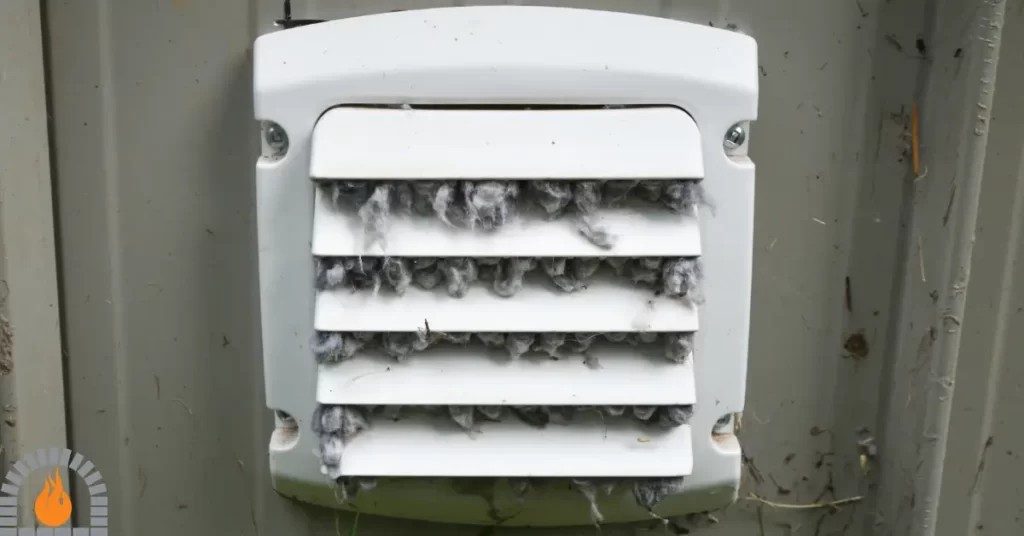Fireplaces are beautiful additions to any home, providing warmth, comfort, and a cozy atmosphere. However, the exterior vent for a fireplace can sometimes disrupt the aesthetics of your outdoor space. Fortunately, numerous imaginative and efficient methods exist to conceal a fireplace vent, guaranteeing its seamless integration with your overall design scheme.
Craft a custom wooden cover tailored to fit snugly over the vent to hide your fireplace outside. This cover can be artfully designed to emulate the aesthetic of a window shutter or an ornate decorative panel, aligning seamlessly with your personal style preferences.
How To Hide Fireplace Vent Outside?
1. Create a wooden cover that fits over the vent.
Choosing the appropriate materials is crucial for a successful vent concealment project. Opt for durable materials such as weather-resistant wood, metal, or stone that can withstand outdoor conditions.
Start by accurately measuring the dimensions of the vent. Consider any obstructions or features around the area that might affect your design choices.
Create a wooden cover that fits over the vent. This cover can be designed to mimic the appearance of a window shutter or a decorative panel, depending on your style preferences.
2. Add Decorative Elements
Enhance the cover’s appearance by incorporating decorative elements like carvings, moldings, or paint. These can help the cover blend with the overall design of your outdoor space.
3. Install a Trellis or Privacy Screen
A trellis or privacy screen not only conceals the vent but also imparts an elegant touch to your outdoor space. Consider climbing plants like ivy or flowering vines to further mask the vent.
4. Create a Vertical Garden
Transform the vent area into a lush vertical garden. Use planters or specially designed vertical gardening systems to grow plants and flowers, concealing the vent.
5. Build a Decorative Structure
Construct a decorative facade around the vent, such as a small faux window or a miniature garden shed. This creates a focal point that distracts from the vent.
6. Incorporate Outdoor Artwork
Hang a piece of outdoor artwork or a decorative panel over the vent. This hides the vent and adds an artistic flair to your outdoor space.
7. Utilize Outdoor Furniture
Strategically placing outdoor furniture like benches, tables, or planters can help conceal the vent while providing functional and aesthetic benefits.
Related Post: Can Gas Fireplaces Cause Headaches?
Key Considerations Before Hiding Fireplace Vent Outside.

Hiding a fireplace vent outside can be a sensitive task as it involves altering the exterior of your home.
Here are some key considerations you should keep in mind before proceeding:
Local Building Codes and Regulations:
Check with your local municipality or city council to understand if any specific regulations or permits are required for modifying your home’s exterior. They may have restrictions on certain types of modifications.
Safety and Ventilation:
Ensure that the venting system remains functional and safe after any modifications. Improper ventilation can lead to dangerous situations, including carbon monoxide buildup.
Material Choice:
Select materials suitable for outdoor use and can withstand exposure to the elements. This might include weather-resistant metals or finishes.
Aesthetics and Design:
Consider how the modified vent will blend in with the overall exterior design of your home. It should not look out of place or disrupt the visual harmony.
Airflow and Draft:
Altering the venting system might affect the airflow dynamics of your fireplace. Ensure the modified vent does not create draft problems or hinder the fireplace’s performance.
Professional Installation:
Hiring a professional contractor or technician experienced in fireplace installations and venting systems is advisable. They will have the necessary expertise to ensure the modification is done correctly.
Weather Protection:
The modified vent should protect against rain, snow, and other environmental elements. It should not allow moisture to seep into the fireplace or its components.
Access for Maintenance:
Ensure that the modified vent design allows for easy access for maintenance and repairs in the future. This will help prevent any complications or difficulties if servicing is required.
Neighborhood Aesthetics:
Consider the overall aesthetics of your neighborhood. The modification should not stand out in a way that violates homeowner association rules or local zoning codes.
Insurance Considerations:
Check with your homeowner’s insurance provider to see if the modification will affect your coverage. Some changes to the structure may require an update to your policy.
Future Resale Value:
Consider how this modification might impact the resale value of your home. A poorly executed modification could potentially decrease the value.
Environmental Impact:
Be mindful of any environmental implications. For instance, ensure the modification doesn’t disrupt local wildlife or create hazards.
Related Post: Can You Burn Charcoal In Fireplace?
Affiliate Disclosure: Fireplaceadviser.com is a participant in the Amazon Services LLC Associates Program. We may earn a commission when you click on certain links on this site and purchase.

Hello!! I am Jamal Khan. I often fix my home electric heaters and gas stove problems and research the common issues in the heating units to improve my knowledge and expertise. The aim of establishing fireplaceadviser.com is to share my expertise and knowledge with my audience.












